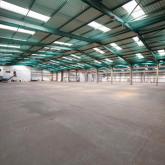
MAKING RENTED HOMES ACCESSIBLE FOR ALL
Published 16 May 2025
Living in a rented home used to be something which was predominantly done by young people, but that is no longer the case, writes Catherine Hunt.
According to the Centre for Ageing Better, the proportion of people aged 55 or over in the private rented sector rose from just 4% in 2004 to 11.3% in 2021; that figure is projected to reach more than 13% older people by 2040.
According to the National Housing Federation, a staggering 867,000 households in the UK headed by someone aged over 55 are living in the private rented sector.
This change is driven by a number of factors: a decline in the availability of social housing; older people selling their own homes to release equity to fund their retirement, and the simple fact that we are heading towards having an older generation who has never been able to get on the home-ownership ladder at all.
For landlords, this marks a significant change. The likelihood that your tenant may be older means that they are more likely to have mobility issues and may find living in your property more problematic as they age. Accessibility is becoming a real issue for private landlords.
Figures from Propertymark show that 62% of lettings agents found it was difficult for people with mobility issues to secure an accessible home in the private rented sector. As a result, the organisation has called on the government to adopt a more robust and inclusive approach to this issue as part of wider housing policy.
But landlords shouldn’t be waiting for legislation to force their hand. Quite apart from the ethical aspect, ensuring the home you are renting out is accessible makes good business sense: older tenants are likely to provide you with longer, more stable, trouble-free tenancies.
Whilst fully adapting a home can be problematic and costly, there are simple things a landlord can do in this area. Ensuring paths are flat and free of cracks and bumps, for example, or even installing simple ramps to the front door.
Above all, landlords need to be more receptive to requests from tenants to instal accessibility aids (such as grab rails in the bathroom, or a shower seat). These things will often be funded by the council or a disability charity, so there isn’t necessarily a cost to the landlord, but they do need the landlord’s consent.
It is common sense that landlords need to ensure that their tenants can live in their homes. With a changing demographic meaning that those tenants are increasingly likely to be older and less mobile, that may mean a shift in attitude from landlords to accommodate them.
Share this story
Arnolds Keys Blog

HUGE ‘REGIONALLY IMPORTANT’ NORWICH INDUSTRIAL SITE COMES TO THE MARKET
14 May 2025
One of the largest industrial sites in Norfolk to come to the market for many years has been launched, incorporating a 7.66 acre site with over 94,000 sq ft of... Read more >

FIRST-TIME BUYERS AND TOP END DRIVING AN ACTIVE MARKET
9 May 2025
Fears about a slump in the market after stamp duty rates were restored to their pre-discount levels at the end of March appear to have been wide of the mark,... Read more >

ICONIC GORLESTON SEAFRONT BUILDING UP FOR SALE
22 April 2025
An iconic Norfolk seaside building has been put up for sale, offering an attractive opportunity to create a new leisure development. Read more >

A WELCOME FARMING APPOINTMENT AT THE HEART OF GOVERNMENT
19 April 2025
The news that former NFU president Minette Batters – now Baroness Batters – has been appointed by DEFRA to lead a review of farm profitability has been widely welcomed within... Read more >
